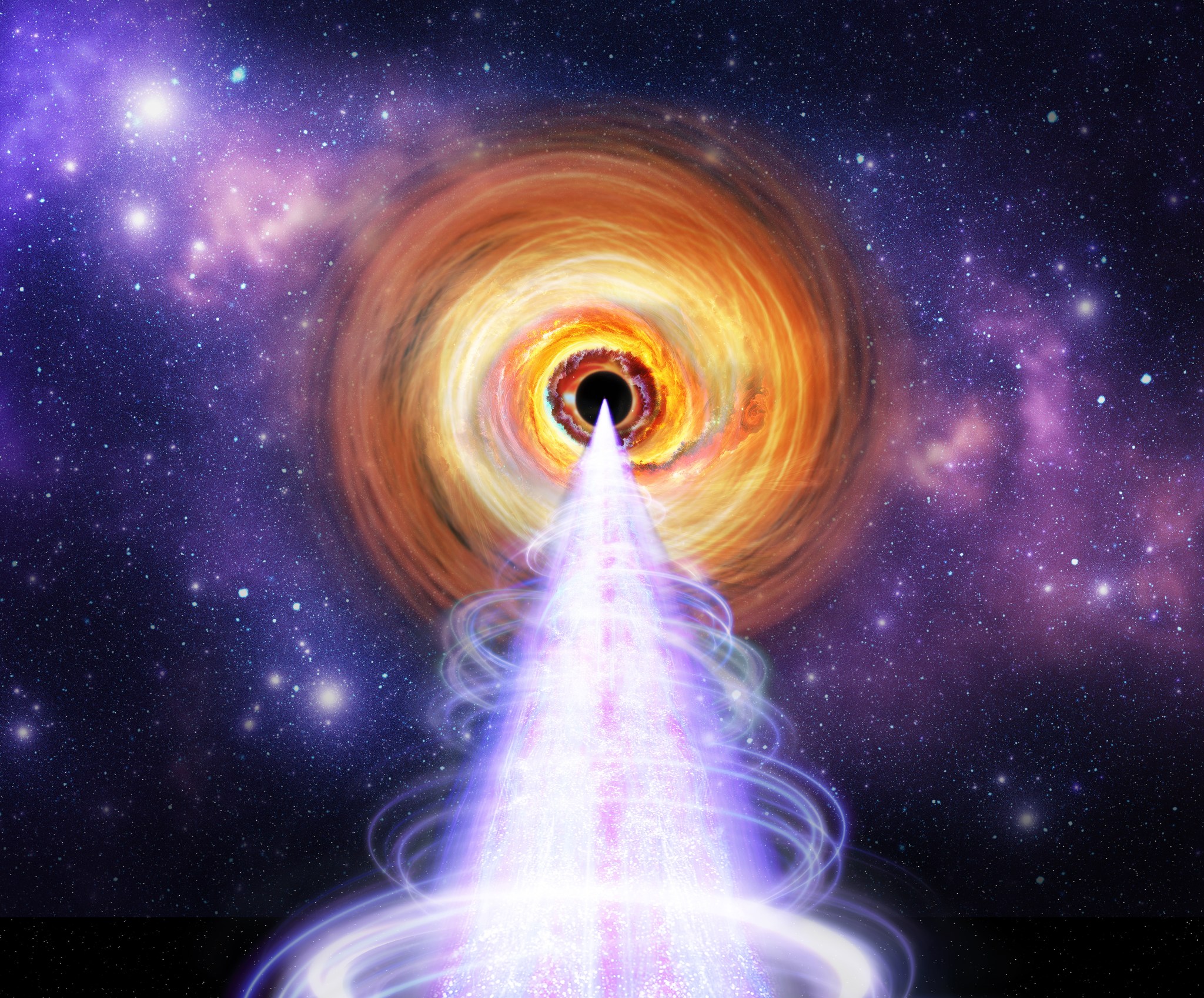5 min read
The blazar BL Lacertae, a supermassive black hole surrounded by a bright disk and jets oriented toward Earth, provided scientists with a unique opportunity to answer a longstanding question: How are X-rays generated in extreme environments like this?
NASA's IXPE (Imaging X-ray Polarimetry Explorer) collaborated with radio and optical telescopes to find answers. The results (preprint available here), to be published in the journal Astrophysical Journal Letters, show that interactions between fast-moving electrons and particles of light, called photons, must lead to this X-ray emission.

Scientists had two competing possible explanations for the X-rays, one involving protons and one involving electrons. Each of these mechanisms would have a different signature in the polarization of X-ray light. Polarization is a property of light that describes the average direction of the electromagnetic waves that make up light.
If the X-rays in a black hole's jets are highly polarized, that would mean that the X-rays are produced by protons gyrating in the magnetic field of the jet or protons interacting with jet's photons. If the X-rays have a lower polarization degree, it would suggest that electron-photons interactions lead to X-ray production.
IXPE, which launched Dec. 9, 2021, is the only satellite flying today that can make such a polarization measurement.
"This was one of the biggest mysteries about supermassive black hole jets" said Iván Agudo, lead author of the study and astronomer at the Instituto de Astrofísica de Andalucía – CSIC in Spain. "And IXPE, with the help of a number of supporting ground-based telescopes, finally provided us with the tools to solve it."
Astronomers found that electrons must be the culprits through a process called Compton Scattering. Compton scattering (or the Compton effect) happens when a photon loses or gains energy after interacting with a charged particle, usually an electron. Within jets from supermassive black holes, electrons move near the speed of light. IXPE helped scientists learn that, in the case of a blazar jet, the electrons have enough energy to scatter photons of infrared light up to X-ray wavelengths.
BL Lacertae (BL Lac for short) is one of the first blazars ever discovered, originally thought to be a variable star in the Lacerta constellation. IXPE observed BL Lac at the end of November 2023 for seven days along with several ground-based telescopes measuring optical and radio polarization at the same time. While IXPE observed BL Lac in the past, this observation was special. Coincidentally, during the X-ray polarization observations, the optical polarization of BL Lac reached a high number: 47.5%.
"This was not only the most polarized BL Lac has been in the past 30 years, this is the most polarized any blazar has ever been observed!" said Ioannis Liodakis, one of the primary authors of the study and astrophysicist at the Institute of Astrophysics - FORTH in Greece.
IXPE found the X-rays were far less polarized than the optical light. The team was not able to measure a strong polarization signal and determined that the X-rays cannot be more polarized than 7.6%. This proved that electrons interacting with photons, via the Compton effect, must explain the X-rays.






